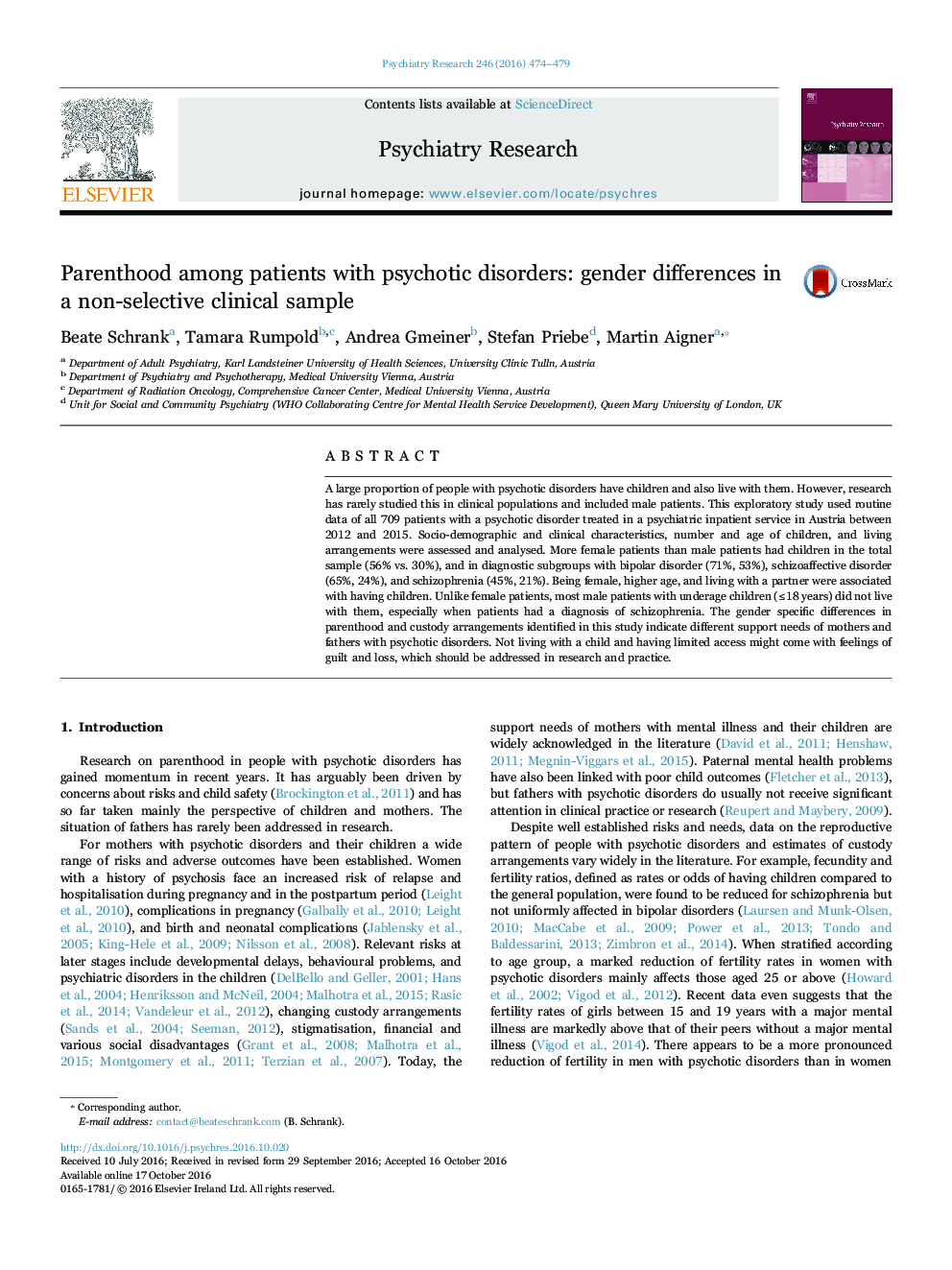| Article ID | Journal | Published Year | Pages | File Type |
|---|---|---|---|---|
| 4933821 | Psychiatry Research | 2016 | 6 Pages |
Abstract
A large proportion of people with psychotic disorders have children and also live with them. However, research has rarely studied this in clinical populations and included male patients. This exploratory study used routine data of all 709 patients with a psychotic disorder treated in a psychiatric inpatient service in Austria between 2012 and 2015. Socio-demographic and clinical characteristics, number and age of children, and living arrangements were assessed and analysed. More female patients than male patients had children in the total sample (56% vs. 30%), and in diagnostic subgroups with bipolar disorder (71%, 53%), schizoaffective disorder (65%, 24%), and schizophrenia (45%, 21%). Being female, higher age, and living with a partner were associated with having children. Unlike female patients, most male patients with underage children (â¤18 years) did not live with them, especially when patients had a diagnosis of schizophrenia. The gender specific differences in parenthood and custody arrangements identified in this study indicate different support needs of mothers and fathers with psychotic disorders. Not living with a child and having limited access might come with feelings of guilt and loss, which should be addressed in research and practice.
Related Topics
Life Sciences
Neuroscience
Biological Psychiatry
Authors
Beate Schrank, Tamara Rumpold, Andrea Gmeiner, Stefan Priebe, Martin Aigner,
